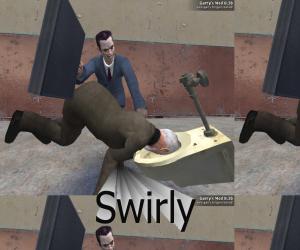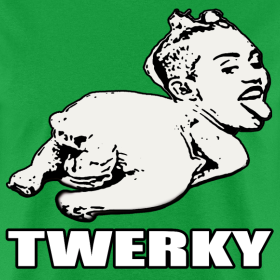Nope. I mean horizontal spin.
The fin orientation, once the CG is no longer forward of CP, will cause the rocket to spin around it's longitudinal axis. The rocket will then orient perpendicular to the direction of fall, meaning horizontal to the ground. Both the rocket body and the fins will then provide air drag force
The problem with this, however, is the rocket is still spinning when it hits the ground. The spinning fins will impact the ground with a greater force than just momentum alone, so you will often break a fin. My way around this (which won't work unfortunately with this design) is to use a smooth outer ring fin.
The spinning fins would likely impact the ground with spinning motion; however that's more of a danger for conventional fins where lateral (?) stress on the joint would make it more likely that the fin breaks off due to the rotation; however if you look at either fins on this design, they have a very long root attachment, so it is very strong and additionally, the fins curve and the rotation would be so that the fin is angled more in line with the impact force (almost like glancing rather than direct hit) which I think is actually better. So says mindsim!
Also of note is that when I saw the 18mm can spinning down on descent, it was roughly 45 degrees since it was being pulled down by the nose cone.
Back to the design, wondering will the ball bearings make the fin can spin faster than just a straight attachment with the whole rocket spinning?
I Launched a lot of spinning designs earlier this year and spin fins fixed on a rocket results in a lot of drag (since the rocket itself resists initial rotation, the fins get drag until it starts the rocket rotating enough) and usually this results in lower altitude. Additionally, the spinny rockets tend to spiral more on coast since it behaves much like a top as it slows down. I noticed this a bit on the spin cans which had a bit of binding. The spin cans which do spin well usually get very high and have very straight flights and straight coasts. I think a bearing version will be laser straight...so I hope.
At the next club launch I'll see if I can drag race two versions...one with free spin and the other with the same fin can taped in place.
Last edited:









